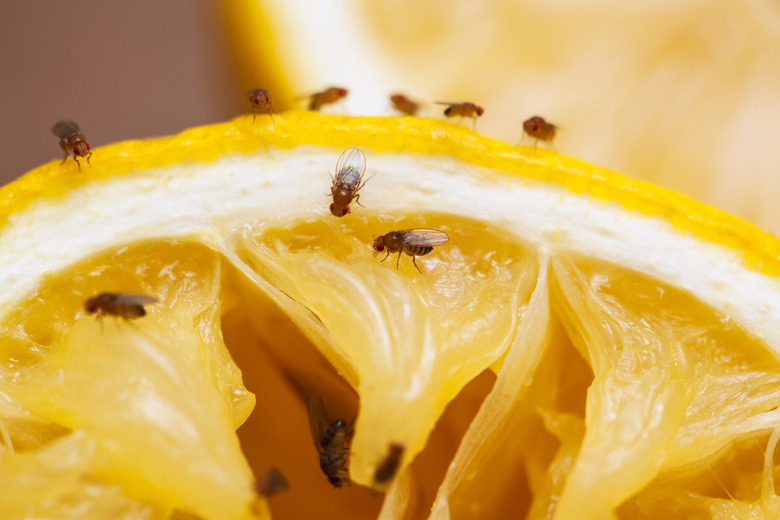Here's How Fruit Flies Could Someday Cure Chronic Pain
When that fruit fly smacks into your bedroom window at full force, make no mistake: It hurts. Now, science is telling us that even after a fly heals from its window pane crash, its injury may never stop hurting.
Scientists have known for more than 15 years00272-1) that insects experience pain, or at least something akin to pain. But new research published earlier this month by University of Sydney Associate Professor Greg Neely indicates some more specific details: Insects experience chronic pain, even long after an injury has healed.
Neely and his team, whose research appeared in the journal Science Advances, suggest that chronic pain in fruit flies come from similar stimuli as chronic pain in humans.
Why Fly Pain Matters
Why Fly Pain Matters
Neely and his fellow researchers are studying pain at the Charles Perkins Centre, aiming to ultimately develop non-opioid pain management solutions. Neely said in a University of Sydney press release that research into chronic pain in fruit flies could kick off the development of treatments that would address both the cause and the symptoms of chronic pain in humans.
"If we can develop drugs or new stem cell therapies that can target and repair the underlying cause, instead of the symptoms, this might help a lot of people," Neely said in the release.
For the purposes of their study, Neely and his team define chronic pain as "persistent pain that continues after the original injury has healed." This can occur as inflammatory pain or neuropathic pain.
Neuropathic pain happens as a result of damage to the nervous system, usually described by humans as burning or shooting pain. Neely's team focused on this type of chronic pain in their research.
What They Found
What They Found
As it turns out, when a fruit fly sustains and heals from an energy, its body essentially "loses its pain brakes" and becomes hypersensitive in an effort to protect the fly moving forward. This lower pain threshold makes the fly "hyperviligant" to help it protect itself for the rest of its life, according to Neely.
Something similar happens in humans – but without the same benefit for survival.
"Animals need to lose the 'pain brakes' to survive in dangerous situations, but when humans lose those brakes, it makes our lives miserable," Neely said in the University of Sydney press release. "We need to get the brakes back to live a comfortable and non-painful existence."
Now, scientists know that the primary cause of neuropathic pain in flies is the loss of the pain brakes in their central nervous system. That knowledge can help inform Neely's search for pain solutions moving forward.
"We are focused on making new stem cell therapies or drugs that target the underlying cause and stop pain for good," he said in the release.
Cite This Article
MLA
Swanston, Brenna. "Here's How Fruit Flies Could Someday Cure Chronic Pain" sciencing.com, https://www.sciencing.com/heres-how-fruit-flies-could-someday-cure-chronic-pain-13720264/. 24 July 2019.
APA
Swanston, Brenna. (2019, July 24). Here's How Fruit Flies Could Someday Cure Chronic Pain. sciencing.com. Retrieved from https://www.sciencing.com/heres-how-fruit-flies-could-someday-cure-chronic-pain-13720264/
Chicago
Swanston, Brenna. Here's How Fruit Flies Could Someday Cure Chronic Pain last modified March 24, 2022. https://www.sciencing.com/heres-how-fruit-flies-could-someday-cure-chronic-pain-13720264/
